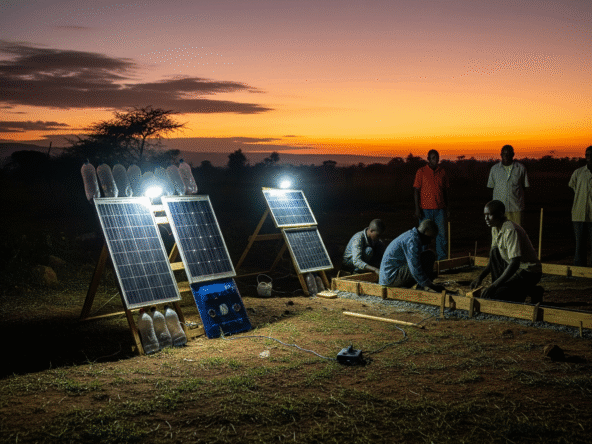As more Kenyan homeowners explore creative ways to use their outdoor spaces, timber decks are becoming increasingly popular for their affordability, versatility, and aesthetic appeal. Whether you’re setting up a relaxation spot, a transition zone for backyard extensions, or a dining area, a timber deck is a functional and stylish addition to your compound even when working with a tight budget.
This guide walks you through how to plan and install a DIY timber deck, what timber to choose, how to manage costs, and how to maintain your deck for long-term durability, especially in Kenya’s varied climate and soil conditions.
1. Why Install a Timber Deck in Your Backyard?
A timber deck is not just decorative. It adds real function and usability to your outdoor living space by offering:
- A level platform for outdoor seating or dining
- A seamless extension to outdoor kitchens or backyard lounging areas
- A base for placing potted plants, pergolas, or small gazebos
- A dry surface in areas prone to mud or uneven terrain
When well integrated, timber decks blend easily with fencing, outdoor lighting, water tanks, and proper drainage systems, making backyard spaces more livable and low-maintenance.
2. Timber Options and Approximate Costs in Kenya
Your choice of timber will affect both the cost and durability of your deck. Below are some popular options available locally:
| Timber Type | Cost (KSh per ft) | Key Features |
|---|---|---|
| Treated Pine | 100–140 | Budget-friendly, termite-treated |
| Cypress | 120–160 | Readily available, easy to work with |
| Hardwood | 250–400 | Dense and durable, suitable for longevity |
For budget-conscious DIY projects, treated pine or cypress offers the best balance between cost, strength, and ease of use.
3. How to Build a Timber Deck: Step-by-Step Guide
Tools and Supplies:
- Handsaw or circular saw
- Hammer or power drill
- Spirit level and measuring tape
- Galvanized nails or screws
- Concrete mix or gravel for footings
- Deck oil or timber sealant
- Anti-termite treatment
Installation Steps:
- Clear and prepare the site: Remove all vegetation, debris, and level the area.
- Mark your deck layout using pegs and string lines.
- Dig footing holes or prepare gravel pads, especially if the soil is loose or clay-heavy.
- Install support beams or joists, raised 6 to 8 inches above ground to avoid moisture damage.
- Lay your decking boards, ensuring a gap of about 5mm between boards for expansion and drainage.
- Treat the timber with sealant or deck oil to protect against sun, rain, and pests.
If building on black cotton soil, consider incorporating a soak pit nearby to handle any water runoff effectively.
4. Maintenance Tips for Long-Term Durability
To keep your deck safe, beautiful, and long-lasting:
- Apply deck oil or sealant every 12–18 months
- Use only galvanized or stainless-steel fasteners to prevent rust
- Regularly check and re-tighten bolts and screws
- Sweep off debris to avoid mold or staining
- Add a light slope to the surface for natural drainage
If your deck is part of a broader water-use plan, integrate it with water-saving plumbing ideas or lighting from budget solar options.
5. Integrating Your Deck into the Backyard Layout
Your deck should not stand alone—it works best when designed to complement your surroundings:
- Position next to low-cost fencing solutions for privacy
- Add potted plants, raised beds, or planters for greenery
- Link it to paths, paving, or even water storage zones
- Match decking color or wood grain to your interior flooring finishes for continuity between indoor and outdoor spaces
6. Common DIY Mistakes to Avoid
Avoid these errors to save money and prevent structural issues:
- Placing timber directly on soil, which accelerates rot
- Using non-treated or unsealed timber
- Ignoring site slope and water runoff
- Using incorrect spacing between deck boards
- Failing to check if permits are needed for structures in controlled neighborhoods
If you plan to hire help, read this guide on Hiring and Managing Contractors in Kenya.
A timber deck is one of the most impactful upgrades you can make to a Kenyan home especially in growing towns where outdoor living is highly valued. With just a few tools, some basic construction skills, and careful material selection, you can build a backyard deck in under a week and enjoy the results for years.
Explore More:

